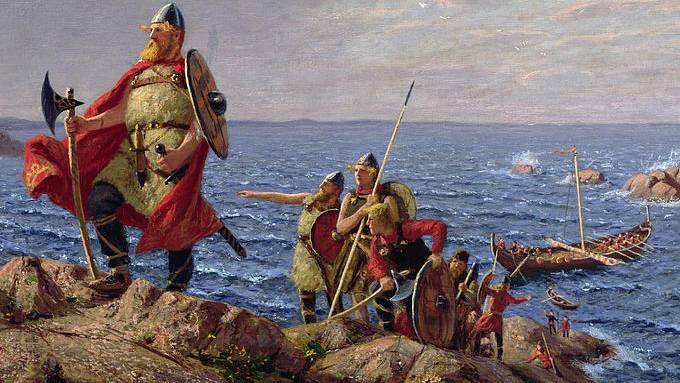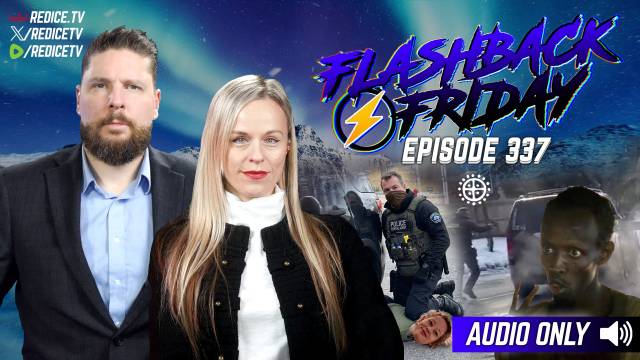Meet the Norse sailors who reached America 500 years before Columbus

With more than 4.6 million articles, Wikipedia is an invaluable resource, whether you’re throwing a term paper together at the last minute or searching the fine art and anthropology pages for nudity, just like in encyclopedias of yore. But follow enough links, and you get sucked into some seriously strange places. We explore some of Wikipedia’s oddities in our 4,640,996-week series, Wiki Wormhole.
This week’s entry: Norse colonization of the Americas
What it’s about: As we were all taught in school, Christopher Columbus discovered America. Except he never actually made it to North America, “discovered” islands that had already been discovered by the people living there, and wasn’t even the first European to visit the Americas. That distinction goes to Leif Erikson, a Norse explorer who reached what’s now northern Canada roughly 500 years before Columbus. Erikson established the first European settlement in the New World, and Norsemen lived in North America for centuries before withdrawing.
Strangest fact: As we were all taught in the previous paragraph, Leif Erikson was the first European to visit the Americas. But he wasn’t the first, either. A merchant sailor named Bjarni Herjólfsson was blown off course while sailing from Iceland to Greenland (both Norse colonies at the time), and found previously unknown land to the west. He explored three areas—Helluland (land of the flat stones, probably Baffin Island), Markland (land of forests, probably Labrador), and Vinland (land of wine, almost certainly Newfoundland). Herjólfsson described his findings to Erikson, who returned to further explore these newly found lands, and set up a settlement.

The possible routes of Norse explorers, based on information recorded in centuries-old Icelandic Sagas.
Biggest controversy: The Norse called Native Americans “Skraelings,” which were primarily the Thule, a group who predated the Inuit. The word is the only surviving word from the Old Norse spoken by Erikson and his contemporaries, and its actual meaning and origin isn’t clear. Wikipedia suggests it may be related to the Norse words skrala (shout) or skrá (dried skin, referring to the pelts worn by the Thule). But on the Norse colonization talk page, Wikipedia user Fredrik suggests skraeling is related to the Swedish skrälle, meaning sickly and ugly. It’s been recorded that the Norse who sailed west found the locals ugly and weak compared to the stereotypically burly Viking sailors.
Thing we were happiest to learn: Unlike Columbus, the Norse didn’t annihilate the first Native Americans they encountered. While relations with the Skraelings weren’t always peaceful, the Norse saw the Thule and other local groups as trading partners and didn’t try and enslave them, as Columbus immediately did upon meeting the Arawaks. This particular Wikipedia page doesn’t touch on this, but one reason Columbus started a wave of European colonization and Erikson didn’t is because Columbus’ crew brought smallpox, which wiped out a vast majority of the population in both North and South America. The smallpox virus isn’t as easily transmitted in cold climates, so Norse sailors didn’t bring the deadly disease with them. As such, they dealt with a healthy, robust America, instead of the enfeebled continent encountered by post-Columbian explorers.
Thing we were unhappiest to learn: The Norse explorers were also unlike Columbus in that news of their deeds did not spread far and wide. While sagas were told about voyages to Vinland, they weren’t put into writing until the 13th and 14th centuries, and they weren’t taken seriously as historical documents until 1837, when historians began to consider the likelihood that the Norse—who were excellent sailors and had definitely traveled to Ireland, Iceland, and Greenland—could have plausibly continued westward. Greenland and Baffin Island are far closer to each other than Ireland and Iceland, after all. But no definitive proof existed of the Norse explorers until one of Erikson’s settlements was uncovered at L’Anse Aux Meadows in Newfoundland in 1960.

A re-creation of a Norse sod house, at modern-day L’Anse Aux Meadows.
Also noteworthy: Leif wasn’t the only member of the Erikson family to go sailing west. His brother, Thorvald Eiriksson (no idea why the preferred spelling is different), traveled to Newfoundland in 1004, but was killed after attacking some of the locals. Leif’s sister (or half-sister, depending on which account you read), Freydís Eiríksdóttir, was part of an expedition that landed five years later. (A note about Norse last names: The Norse didn’t use surnames in the modern sense, but were very much on the “Worf, Son Of Mogh” system. Leif, Thorvald, and Freydís were all children of Erik The Red, hence “Erik’s son” and “Erik’s daughter” as last names. Iceland uses this nomenclature to this day. For example, Björk Guðmundsdóttir is the daughter of Guðmundur Gunnarsson. Now back to Freydís.)
As her brothers returned from their travels wealthy and successful, Freydís wanted her turn. She teamed up with two men, Helgi and Finnbogi, promising to split the profits equally, and secured Leif’s permission to use his encampment in Vinland. But once there, Freydís betrayed her partners, having them and their people killed in their sleep. Her accomplices refused to kill women, so Freydís murdered five women in all. Word of her actions eventually reached Leif back in Greenland—he had three of her accomplices tortured, but couldn’t bring himself to punish his sister. Meanwhile, Freydís was still in Vinland, and as with Thorvald’s expedition, she ran into local trouble. It’s believed that a bull got loose, terrifying the nearby Thule, who returned in force to drive the Norse out. They ran, but Freydís was pregnant and could not keep up. So she scolded her crew for retreating, saying, “Why run you away from such worthless creatures, stout men that ye are?” Next, she took a sword from the body of a man that had been killed while fleeing, exposed her breast, and struck it with the sword. The pursuers were scared off by this show of bravery, and the Norse escaped to the sea.
Best link to elsewhere on Wikipedia: Erikson may have gotten to America 500 years before Columbus, but someone else got there 14,000 years before he did. The Settlement Of The Americas page discusses the best-regarded theories as to how Asians migrated across a land bridge from Siberia to Alaska during the previous ice age, and proceeded to populate two continents.
Further down the wormhole: One important export of the Norse colonies in North America was lumber, which was scarce in Greenland. Lumber’s natural enemy, of course, is the termite. The preferred method of dealing with termites is using poison, and although there are plenty of real-life poisons for Wikipedia to discuss, next week we’ll look at the site’s list of fictional toxins.
Source: avclub.com
Tune into Red Ice Radio:
John de Nugent - The Solutreans: The First Ancient Settlers in North America
Maria Kvilhaug - Old Norse Mythology and Legend & Viking Vengeance
Stephen A. McNallen - Asatro, Runes, Vikings & Norse Mythology
Daniel Updike - Asatru in the 21st Century
Felice Vinci & William Mullen - Baltic Origins of Homer’s Epic Tales






















